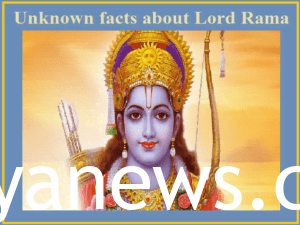Sita Rama: the legendary couple from Hindu mythology, have captivated hearts and minds for centuries. Their timeless tale, narrated in the epic Ramayana, is not just a love story but a profound exploration of duty, virtue, and the triumph of good over evil. In this blog, we delve into 17 fascinating facts about Sita and Rama that add layers to their mythical narrative.

1. Divine Origins:
Sita is believed to be an incarnation of the goddess Lakshmi, while Rama is regarded as the seventh avatar of Lord Vishnu. Their birth is considered divine, with the purpose of restoring cosmic balance by defeating the demon king Ravana.
2. Swayamvara Challenge:
Rama won Sita’s hand in marriage by stringing the mighty bow of Lord Shiva, a task that seemed impossible to others. This act showcased Rama’s strength and righteousness.
3. Exile in the Forest:
Rama’s exile, spanning fourteen years, is a pivotal episode in the Ramayana. Along with Sita and his loyal brother Lakshmana, Rama embraced a life of austerity, demonstrating the virtues of sacrifice and duty.
4. Golden Deer Deception:
The abduction of Sita by Ravana was facilitated by his illusionary disguise as a golden deer. Sita’s curiosity led to the pivotal moment of her abduction, marking a turning point in the narrative.
5. Hanuman’s Devotion:
Hanuman, the monkey god, played a crucial role in the Ramayana. His unwavering devotion to Rama and fearless efforts to rescue Sita make him a symbol of loyalty and devotion.

6. The Vanara Sena:
Rama’s alliance with the Banaras (monkey army) is a testament to his ability to forge alliances beyond human realms. Together, they built the iconic bridge, known as Ram Setu, to reach Lanka.
7. Jatayu’s Sacrifice:
Jatayu, the vulture king, sacrificed his life while trying to save Sita from Ravana. His noble act of defiance against evil is celebrated as a symbol of selflessness.
8. The agony of the Fire Ordeal:
Sita underwent the trial by fire (Agni Pariksha) to prove her purity after being rescued from Lanka. Her unwavering commitment to Rama and her chastity added layers to her character.
9. Rama Rajya:
After Ravana’s defeat, Rama’s reign in Ayodhya is often idealized as Rama Rajya, an era of justice, prosperity, and righteousness. It serves as a benchmark for an ideal society.
10. The Birth of Lava and Kusha:
During Rama’s exile, Sita gave birth to twin sons, Lava and Kusha, in the hermitage of sage Valmiki. The boys’ upbringing and their reunion with Rama later in the story provide touching moments.
11. Valmiki’s Ramayana:
The epic Ramayana is attributed to the sage Valmiki, who documented the divine saga. It is considered one of the oldest and most revered texts in Hindu literature.
12. Rama as a Moral Exemplar:
Rama is often seen as the embodiment of dharma (righteousness) and is revered as a moral exemplar. His adherence to duty, even at personal cost, serves as a guiding principle for many.
13. The symbolism of Rama’s Bow:
Rama’s bow, named Kodanda, symbolizes his strength, righteousness, and the power to uphold dharma. It is a recurring motif in the Ramayana, representing the hero’s commitment to justice.
14. Sita’s Connection to Earth:
According to Hindu mythology, Sita is often referred to as the daughter of the Earth (Bhumi Devi), emphasizing her close connection to nature and the Earth’s fertility.
15. Rama’s Compassion:
Despite facing numerous challenges, Rama is known for his compassion and forgiveness. His interactions with various characters, including the repentant Shurpanakha, showcase his benevolent nature.

16. Lessons from Rama’s Life:
The story of Sita and Rama is not just a myth but a source of valuable life lessons. Their journey teaches about love, sacrifice, loyalty, and the eternal struggle between good and evil.
17. Cultural Impact:
The tale of Sita and Rama has transcended religious and cultural boundaries, influencing art, literature, and performing arts across Southeast Asia. The Ramayana continues to be a source of inspiration and contemplation for millions.
Conclusion:
Sita and Rama’s saga is a treasure trove of wisdom, virtues, and timeless lessons. As we delve into the intricacies of their narrative, we find a profound exploration of the human condition and the eternal battle between right and wrong, making their story eternally relevant.
WRITTEN BY ALEX

